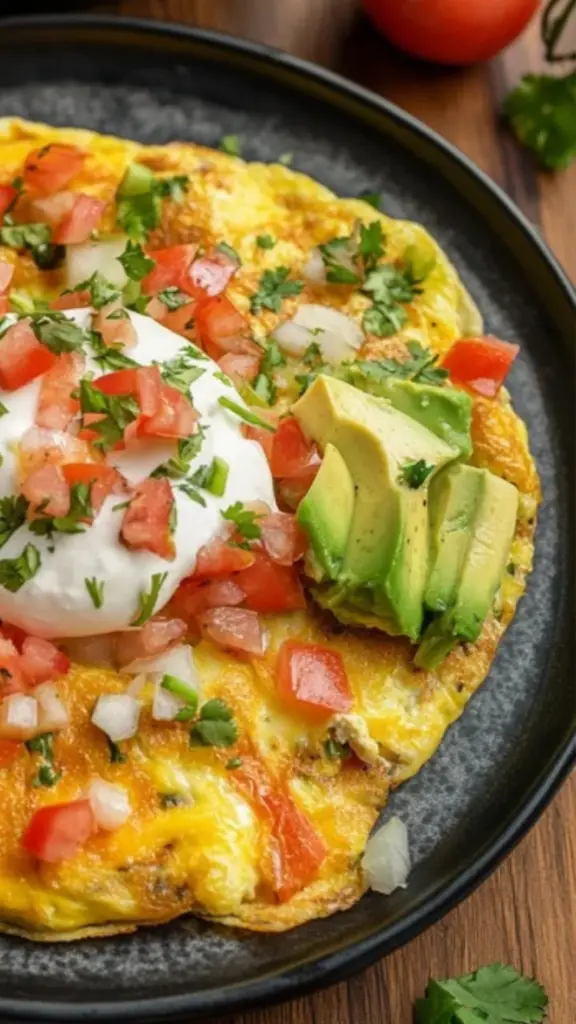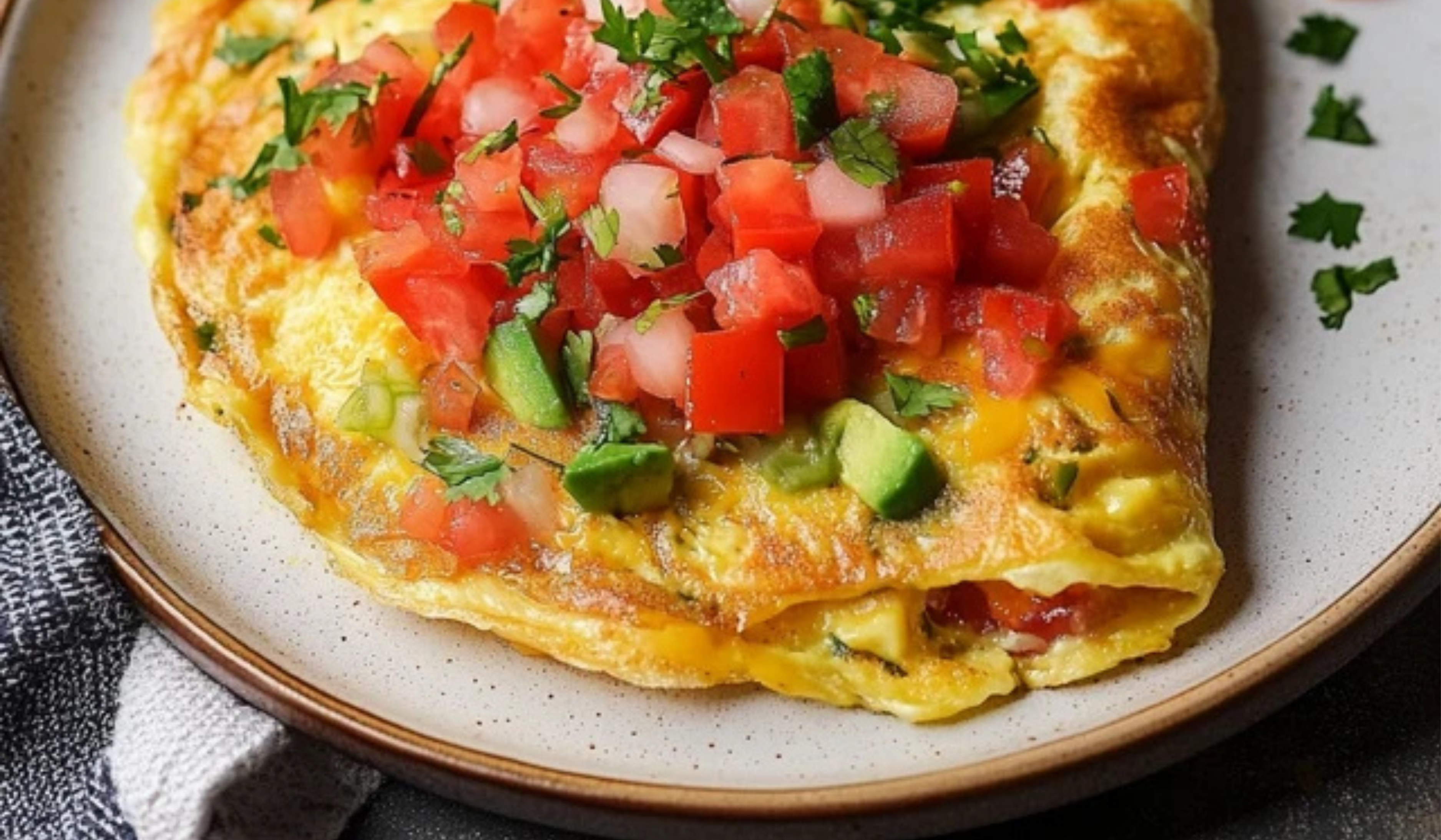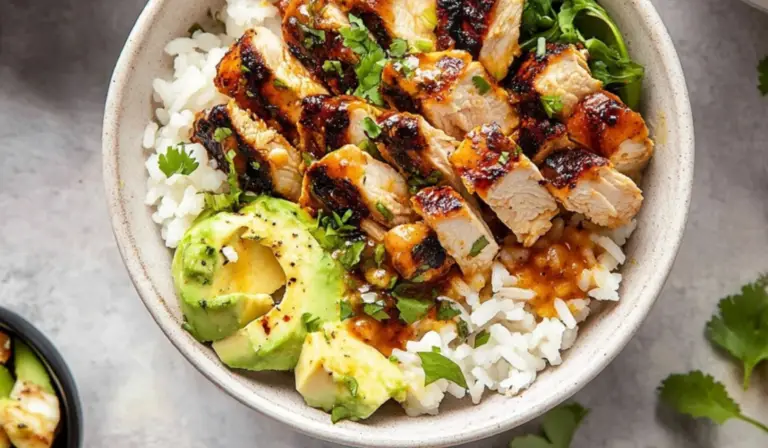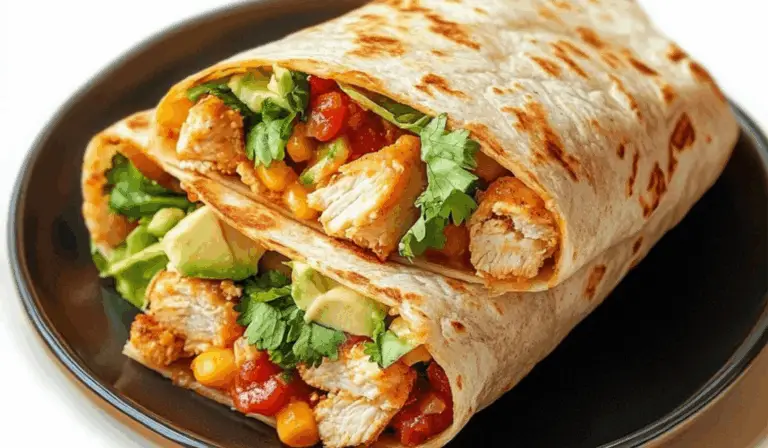Master the Mexican Omelette: A Flavorful Start for Beginner Cooks
Back when I was just learning how to cook, the idea of preparing anything more than scrambled eggs felt intimidating. Like many beginners, I feared the dreaded moment when the eggs would stick to the pan, the filling would spill out, or worse, the omelette would break entirely. Then I discovered the Mexican omelette—a dish that felt impressive yet approachable, bursting with flavor, and flexible enough to welcome mistakes.
PrintMaster the Mexican Omelette: A Flavorful Start for Beginner Cooks
Spice up your mornings with this easy, flavor-packed Mexican Omelette! 🍳🌶️ Perfect for beginners, it’s filled with melty cheese, sautéed peppers, onions, and just the right kick of heat. 🧀🫑 Wake up to bold flavors without the hassle—just whisk, fill, and fold your way to breakfast greatness. Whether you’re fueling up for the day or making brunch at home, this omelette delivers comfort, color, and crave-worthy taste in every bite! ☀️🍅
- Prep Time: 15 minutes
- Cook Time: 15 minutes
- Total Time: 30 minutes
- Yield: 1 serving 1x
Ingredients
Main Ingredients
- 3 large eggs
- ¼ cup milk (any variety: whole, skim, almond, oat, or soy)
- 1 tablespoon olive oil or another neutral oil (such as canola or avocado oil)
- 3 tablespoons chopped yellow onion
- ¼ cup chopped bell pepper (use any color: green, red, yellow, or orange)
- ½ Roma tomato, diced
- ¼ cup shredded Mexican cheese blend (or substitute with cheddar, Monterey Jack, or pepper Jack)
Optional Protein Additions
- ¼ cup cooked, shredded chicken breast or thighs
- ¼ cup seasoned lean ground beef or turkey
Adding chicken or beef can turn this omelette from a light breakfast into a protein-packed brunch or even a quick dinner.
Suggested Toppings (Optional)
- Sour cream
- Salsa or pico de gallo
- Chopped fresh cilantro
- Sliced avocado
- Diced jalapeños
These toppings are optional but can elevate the dish and add freshness, spice, or creaminess depending on your preference.
Equipment Needed
- Medium mixing bowl
- Whisk or fork
- Medium nonstick skillet
- Rubber or silicone spatula
- Small bowl
- Paper towels
- Serving plate
Instructions
1. Prepare the Egg Mixture
Crack the eggs into a medium mixing bowl. Add the milk and whisk vigorously until the mixture is pale, fluffy, and smooth. You want to eliminate any visible streaks of egg white or yolk. Whisking well not only combines the ingredients but also incorporates air, which helps the omelette become light and fluffy.
Set the egg mixture aside while you prepare the vegetables.
2. Cook the Vegetables
Place a medium nonstick skillet over medium heat. Once the skillet is warm, add the olive oil and swirl to coat the bottom of the pan. When the oil shimmers slightly, add the chopped onion, bell pepper, and tomato. Sauté the vegetables for about 3 minutes or until they’re softened but not browned.
If you’re adding pre-cooked chicken or ground beef, you can toss it in with the vegetables to warm everything through.
Once the vegetables are tender, transfer them to a small bowl and set aside. Use a paper towel to gently wipe out the skillet, being careful not to burn yourself. If the skillet looks dry, add a small amount of oil before continuing.
3. Cook the Eggs
Pour the egg mixture into the center of the hot skillet. Use your spatula to gently spread the mixture toward the edges, ensuring an even thickness. Let the eggs cook undisturbed for about 2 to 3 minutes. You’ll know they’re ready when the edges are firm and the top is mostly set but still slightly moist.
4. Add the Fillings
Evenly distribute the cooked vegetables over one half of the omelette. Sprinkle the shredded cheese on top of the vegetables. If using extra protein like chicken or beef, spread that over the vegetables before the cheese.
Let the omelette cook for another 1 to 2 minutes to allow the cheese to melt and the eggs to finish cooking.
5. Fold and Plate
Turn off the heat. Slide your spatula gently under the side of the omelette without the filling and fold it over the side with the vegetables and cheese. Press lightly to seal. Let it rest for a moment, then use your spatula to carefully transfer the omelette to a plate.
Add your favorite toppings and serve immediately.
Notes
Use Medium Heat
High heat will cook the eggs too quickly, resulting in browning or burning before the inside is set. Medium heat allows for gentle, even cooking.
Don’t Overfill
While it’s tempting to load your omelette with fillings, too much can make it hard to fold and might cause it to break apart. Keep the filling to a moderate amount and save extra toppings for the plate.
How to Tell When Eggs Are Done
The eggs should look mostly set and dry around the edges, with a slightly glossy center. If you’re unsure, use the spatula to lift the edge—if it holds its shape, you’re ready to fold.
Fixing Mistakes
If the omelette tears while folding, don’t panic. You can cover the tear with toppings or fold it into thirds like a crepe. The taste will still be excellent.
Prep Ahead
Save time in the morning by chopping vegetables or cooking proteins the night before. Store them in airtight containers in the fridge.
No Whisk? No Problem
Use a fork and beat the eggs in a circular motion until they’re fully blended.
This omelette quickly became a morning favorite. With its colorful mix of sautéed vegetables, melted cheese, and fluffy eggs, it manages to be hearty without being heavy. Even better, it takes just 30 minutes from start to finish and uses ingredients you likely already have in your kitchen. For beginner cooks, this dish is the perfect gateway into confident, creative cooking.
The Mexican omelette stands out as a beginner-friendly recipe because it’s simple to prepare, easy to customize, and packed with nutrition. It’s naturally low in carbohydrates, high in protein, and can be adjusted to suit different diets and preferences. Whether you’re cooking for one or feeding your family, this recipe brings big flavor without requiring complex steps or advanced techniques.
Ingredients and Preparation
This recipe makes one generously sized omelette, but it can easily be doubled or tripled depending on how many people you’re serving. Everything in the ingredient list is easy to find and requires only a bit of chopping and whisking.
Main Ingredients
- 3 large eggs
- ¼ cup milk (any variety: whole, skim, almond, oat, or soy)
- 1 tablespoon olive oil or another neutral oil (such as canola or avocado oil)
- 3 tablespoons chopped yellow onion
- ¼ cup chopped bell pepper (use any color: green, red, yellow, or orange)
- ½ Roma tomato, diced
- ¼ cup shredded Mexican cheese blend (or substitute with cheddar, Monterey Jack, or pepper Jack)
Optional Protein Additions
- ¼ cup cooked, shredded chicken breast or thighs
- ¼ cup seasoned lean ground beef or turkey
Adding chicken or beef can turn this omelette from a light breakfast into a protein-packed brunch or even a quick dinner.
Suggested Toppings (Optional)
- Sour cream
- Salsa or pico de gallo
- Chopped fresh cilantro
- Sliced avocado
- Diced jalapeños
These toppings are optional but can elevate the dish and add freshness, spice, or creaminess depending on your preference.
Equipment Needed
- Medium mixing bowl
- Whisk or fork
- Medium nonstick skillet
- Rubber or silicone spatula
- Small bowl
- Paper towels
- Serving plate
Step-by-Step Instructions
The key to success with an omelette is keeping things simple, staying organized, and not rushing the process. These steps are broken down to help beginners stay on track and feel confident at every stage.
1. Prepare the Egg Mixture
Crack the eggs into a medium mixing bowl. Add the milk and whisk vigorously until the mixture is pale, fluffy, and smooth. You want to eliminate any visible streaks of egg white or yolk. Whisking well not only combines the ingredients but also incorporates air, which helps the omelette become light and fluffy.
Set the egg mixture aside while you prepare the vegetables.
2. Cook the Vegetables
Place a medium nonstick skillet over medium heat. Once the skillet is warm, add the olive oil and swirl to coat the bottom of the pan. When the oil shimmers slightly, add the chopped onion, bell pepper, and tomato. Sauté the vegetables for about 3 minutes or until they’re softened but not browned.
If you’re adding pre-cooked chicken or ground beef, you can toss it in with the vegetables to warm everything through.
Once the vegetables are tender, transfer them to a small bowl and set aside. Use a paper towel to gently wipe out the skillet, being careful not to burn yourself. If the skillet looks dry, add a small amount of oil before continuing.
3. Cook the Eggs
Pour the egg mixture into the center of the hot skillet. Use your spatula to gently spread the mixture toward the edges, ensuring an even thickness. Let the eggs cook undisturbed for about 2 to 3 minutes. You’ll know they’re ready when the edges are firm and the top is mostly set but still slightly moist.
4. Add the Fillings
Evenly distribute the cooked vegetables over one half of the omelette. Sprinkle the shredded cheese on top of the vegetables. If using extra protein like chicken or beef, spread that over the vegetables before the cheese.
Let the omelette cook for another 1 to 2 minutes to allow the cheese to melt and the eggs to finish cooking.
5. Fold and Plate
Turn off the heat. Slide your spatula gently under the side of the omelette without the filling and fold it over the side with the vegetables and cheese. Press lightly to seal. Let it rest for a moment, then use your spatula to carefully transfer the omelette to a plate.
Add your favorite toppings and serve immediately.
Beginner Tips and Notes
Cooking an omelette might seem like a test of finesse, but it’s really about timing and patience. Here are a few tips to help you succeed even on your first try.
Use Medium Heat
High heat will cook the eggs too quickly, resulting in browning or burning before the inside is set. Medium heat allows for gentle, even cooking.
Don’t Overfill
While it’s tempting to load your omelette with fillings, too much can make it hard to fold and might cause it to break apart. Keep the filling to a moderate amount and save extra toppings for the plate.
How to Tell When Eggs Are Done
The eggs should look mostly set and dry around the edges, with a slightly glossy center. If you’re unsure, use the spatula to lift the edge—if it holds its shape, you’re ready to fold.
Fixing Mistakes
If the omelette tears while folding, don’t panic. You can cover the tear with toppings or fold it into thirds like a crepe. The taste will still be excellent.
Prep Ahead
Save time in the morning by chopping vegetables or cooking proteins the night before. Store them in airtight containers in the fridge.
No Whisk? No Problem
Use a fork and beat the eggs in a circular motion until they’re fully blended.

Serving Suggestions
This Mexican omelette is a complete meal on its own, but you can easily build it into a larger breakfast or brunch by adding a few complementary sides.
On the Side
- Sliced fruit like oranges, mango, or melon
- Roasted potatoes or sweet potato hash
- Warm corn tortillas or toast
- Refried beans or black beans
Drinks to Pair
- Fresh orange juice
- Iced coffee or cold brew
- Herbal tea
- A light smoothie with banana and almond milk
Storing Leftovers
If you’re cooking ahead or have leftovers, store the omelette in an airtight container in the refrigerator for up to two days. Reheat in a nonstick skillet over low heat or microwave in 30-second intervals. Keep in mind that the texture of the eggs is best when freshly cooked, so only prepare ahead if needed.
Engagement Features
If you’re new to cooking, the Mexican omelette is a fantastic place to begin. It teaches essential kitchen skills—like sautéing, whisking, and folding—while also encouraging creativity. Once you’ve tried the basic version, you can explore variations by changing up the vegetables, trying new cheeses, or adding different proteins.
This dish is forgiving, quick to prepare, and satisfying to eat, making it a great confidence-booster for any beginner cook. It’s also versatile enough to work for breakfast, brunch, or even a light dinner.
Now it’s your turn. Try out this recipe and see how it fits into your cooking routine. Did you add your own twist? Did you discover a favorite topping or technique? Share your experience in the comments or with friends and family. Cooking becomes even more enjoyable when it’s shared, and your version of this dish might be the inspiration someone else needs to try their hand in the kitchen.








